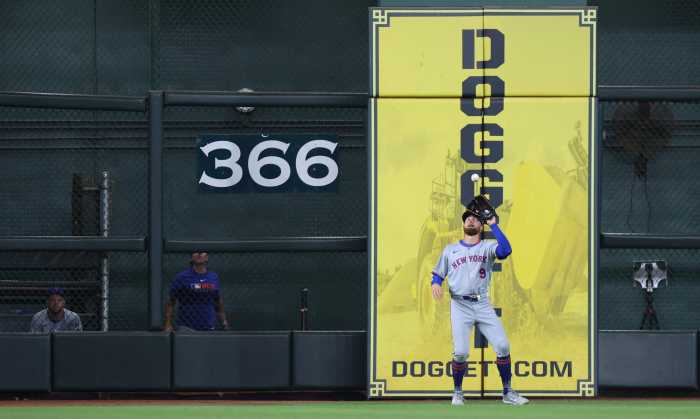He draws big and tall.
The Brooklyn-based artist behind “Selassie Mountain” — a big mural at the Health Conscious Food store in Laurelton, is a self-described humble artist and no stranger to colorful murals. Flatbush artist Vince Ballentine was recently commissioned by the owner of the business at Merrick Boulevard and 231st Street to beautify the store’s wall with a painting of Haile Selassie and the Lion of Judah. And it is one of dozens of similar large paintings he has drawn in other countries, he said.
“I have done hundreds of murals. All of my babies are sprinkled around the world,” said Ballentine.
His murals include depictions that tackle a variety of subjects, including famous figures, musicians, comic book characters, and everyday people. One of his most popular works is another Queens mural located on Linden Boulevard and 192nd Street in St. Albans. It is dedicated to the Queens-formed hip-hop group, “A Tribe Called Quest.”
And while the number of his works could be more than he estimates, he added that over time many of his projects have begun to mean a lot more than being sights to behold.
“In the past few years, my murals have started to become something deeper than how it started,” he said.
He has also done artistic projects for brands including BET, Nike, and commercials. But his first touch with art was in the 90s, when he explored art with graffiti drawings. That particular form of art helped him tailor his craft and the direction he would go in the skill.
“When I started I was doing graffiti, but then it turned into more character-based things and themes, and me learning how to get better,” said Ballentine. “It was all about technique at that point, and looking at my work and asking myself, ‘Does it look like what it should look like?’”
As an artist he says he finds inspiration everywhere he goes because it opens him up to discovering new things to make the subject of his art.
“Everything helps with artistry — you can have a lot of ideas as far as visuals go and most of these ideas come from just being on the street and paying attention to what you see,” said Ballentine.
This observation also helps artists determine what type of method they should use in their art.
“That’s where style comes from,” he said. “How you see is how you paint. You can emulate it but how you see it is how your style will be. And I developed a style with how I work, and it’s organic now.”
Ballentine says despite his works beautifying many spaces and cities around the world, he does not want to be a ‘famous’ artist.
He often shies away from bringing attention to his artwork, and sometimes omits his signature, because he enjoys the mystery of being in the background and hearing what people say about his work without knowing who he is.
“I like being the fly on wall with no one knowing if I did the work,” he said.
But he does want people to look beyond the colors in his art and give thought to the inspiration behind his art.
“I don’t want to be a surface person or a quick read that someone just looks at or where I’m just a check box,” said Ballentine.


























